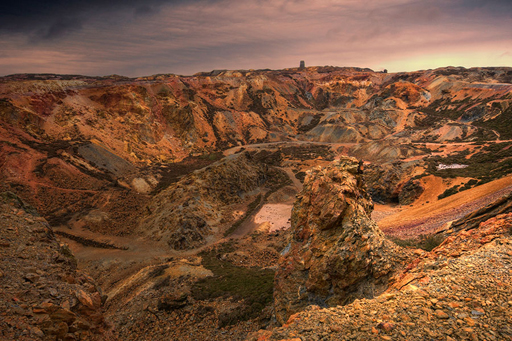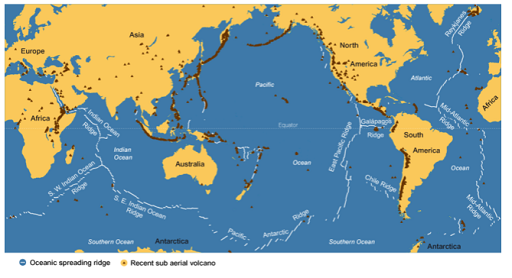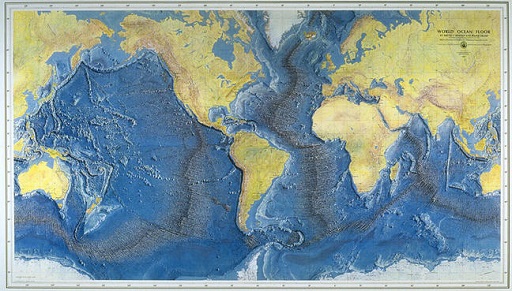2.15 Under ancient seas
The second main type of ore for copper is submarine sulphide deposit like that formed at Parys Mountain.
The Parys Mountain metal deposits on Anglesey in North Wales have been mined for almost 4000 years, but the formation of the deposits date back much, much further, to the Ordovician, over 443 million years ago. At that time, the area that we now call Anglesey was underwater, part of an ancient ocean called Iapetus, and south of the equator.
The deposits that now make up the ores at Parys, and at many copper deposits worldwide, were produced in volcanoes. But not the sort of volcano you might automatically think of – subsea volcanoes.
Most of the world’s volcanoes aren’t the cone shaped mountains with lava bursting out of them that you might imagine. Most volcanoes are under the oceans, in long ridges which span the globe.
These volcanoes make new oceanic crust at ‘spreading centres’ distributed (mostly) from the centre of the world oceans. These are the constructive plate margins and where all new sea floor is made.



